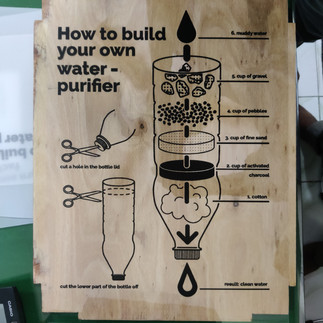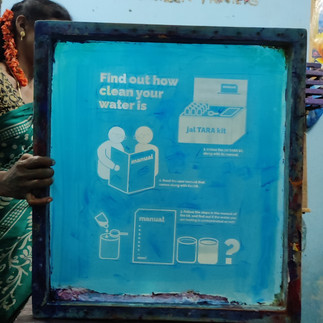Collaboration project organized by the Embassy of Switzerland
- Tejas Pawar
- Mar 1, 2022
- 4 min read
Updated: Jan 29

“A Collaboration project organized by the Embassy of Switzerland under Public Diplomacy project to design environmental Activity boxes for "Swiss it on Wheels 2022.”
Duration:
4 months
Organisations:
Zurich University of the Arts
National Institute of Design Andhra Pradesh
Treecraze Foundation
Embassy of Switzerland
Mentors:
Christina Omlin
Madhura Phatak
Sekhar Mukherjee
Nicole Kind
Niklaus Heeb
Madhura Phatak
Purva Marwaha
Bhawna Badola
Ajay Prasad
Students team:
Leonie Overtoom
Elena Kaeser
Yannick Meyer
Tejas Pawar
Shubham Sawant
Workshop team:
Suresh anna
Usmaan anna
Virendra anna
Aim:
“To design the Environmental Activity boxes for young adults in the age group of 13-18 that will tour with "Swiss it" bus through different cities.”
About Swiss it on Wheels
The "Swiss it!" bus which is launched by the Official Swiss Network will tour (virtually and physically) through about 28 cities in India with the aim to encourage young adults in the age group of 13-18 years to engage in the topics of sustainability, air pollution, and water pollution as well as waste segregation and recycling through workshops, activities, films and more.
Introduction to the project
In our initial meeting, we were introduced to all members involved in the project from both the Zurich institutes and the Treecraze Foundation. This meeting primarily focused on establishing effective communication channels between the organizations.

Following the introductions, the Embassy's requirements were outlined, and the Treecraze Foundation shared their preliminary ideas. The project aimed to develop three Environmental Activity Boxes—Water, Waste, and Air—each containing four activities.

Research
Our research began by addressing the core issue of waste management, specifically focusing on identifying materials commonly considered waste in Indian households. This approach was essential to ensure that the activities we developed would be relevant and practical for the target audience.

Common household waste in India includes items such as vegetable and fruit peels, paper, plastics, and textiles.

Ideation for activity box design

Ideation for activity
During the ideation phase, I focused on developing upcycling activities for the Waste Box, while also contributing ideas for the Water and Air Boxes. The goal was to design engaging activities that utilized common household waste materials, promoting sustainability and creativity among students.

Finalising the activity
After several rounds of ideation and discussion, the activities were finalized with careful consideration of their feasibility and alignment with the project's goals. The Waste Upcycling activity was divided into two parts: "Upcycle your old t-shirt" and "Upcycle an old cardboard box." These activities were chosen for their simplicity and the availability of materials.
During the finalization process, two key criteria were prioritized:
The materials required for the activities should be easily accessible to participants.
The activities should focus on reusing existing waste, avoiding the need for participants to purchase new materials specifically for the tasks.

By adhering to these guidelines, the finalized activities ensured practicality, affordability, and adherence to the principles of sustainability.
The first draft of the box
In the initial design phase, we decided that each of the four activities would occupy a separate level within the Waste Box, resulting in a four-tiered structure.
To facilitate mobility, we designed a trolley featuring a Swiss cross cutout on its base plate, aligning with the "Swiss it on Wheels" theme. Each trolley was painted to correspond with the specific box it carried.

We then created rough prototypes to evaluate ergonomics, assembly processes, and to ensure all activities fit seamlessly within the box.

Redesigned Box
In the final design, we observed that the initial box dimensions were larger than necessary for some activities. To optimize space and reduce material waste, we combined certain activities into a single level and adjusted the box size accordingly.
Box Dimensions
To make the box more efficient and avoid wasting materials, we reduced its size to better match the space requirements for the activities. We also combined two activities into a single box where possible, especially for activities that didn’t require much space. For instance, the Memory Game, which only needed cards, was initially planned for a whole box. By consolidating the activity into a smaller section, we saved both space and material, reducing costs while still maintaining functionality.


Box Type


Lid Design

Material Used

In-house Box Production
The production of the box was carried out in three key stages to ensure quality and precision. First, the individual box pieces were manufactured, focusing on durability and accurate dimensions. Next, the screen printing process was applied to add design elements, including visual cues and branding that aligned with the "Swiss it on Wheels" theme. Finally, the boxes underwent assembly, where all components were meticulously put together to create the finished product, ready for use in the project.
Manufacturing
Screen printing
Final assembling
Outcome
The final outcome of the project was a set of thoughtfully designed Environmental Activity Boxes, including the Water, Waste, and Air Boxes, each crafted to engage students in hands-on sustainability activities. These boxes were visually cohesive, with trolleys painted in theme-specific colors and featuring the iconic Swiss cross, representing the "Swiss it on Wheels" initiative.
Swiss it on Wheels Workshop
Video showcasing the "Swiss It on Wheels Workshop" taking place live at various schools. The footage highlights students engaging with the Environmental Activity Boxes—Water, Waste, and Air—through hands-on activities designed to promote sustainability and creativity.
Letter of Appreciation

























































